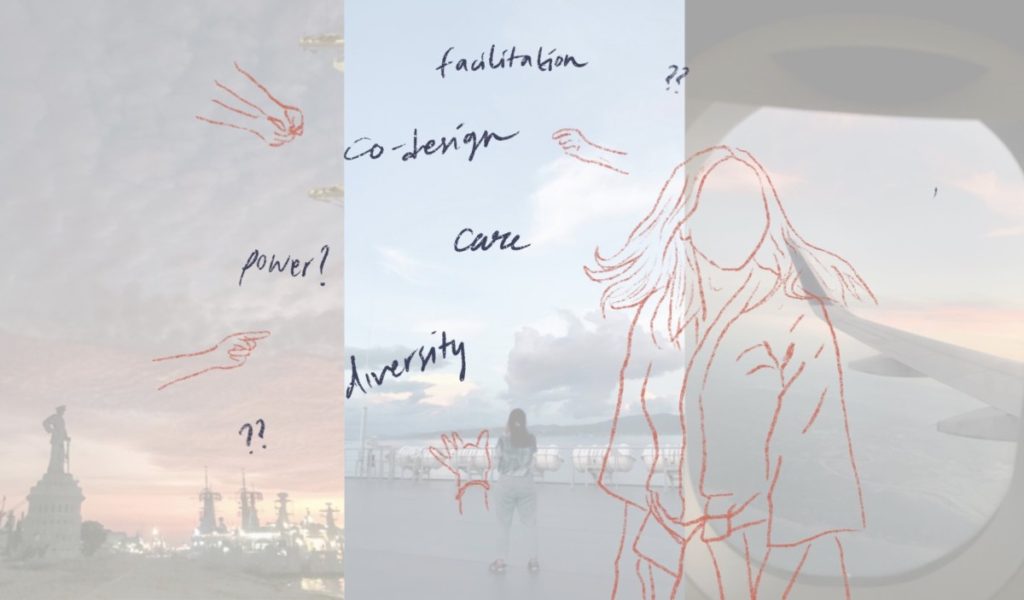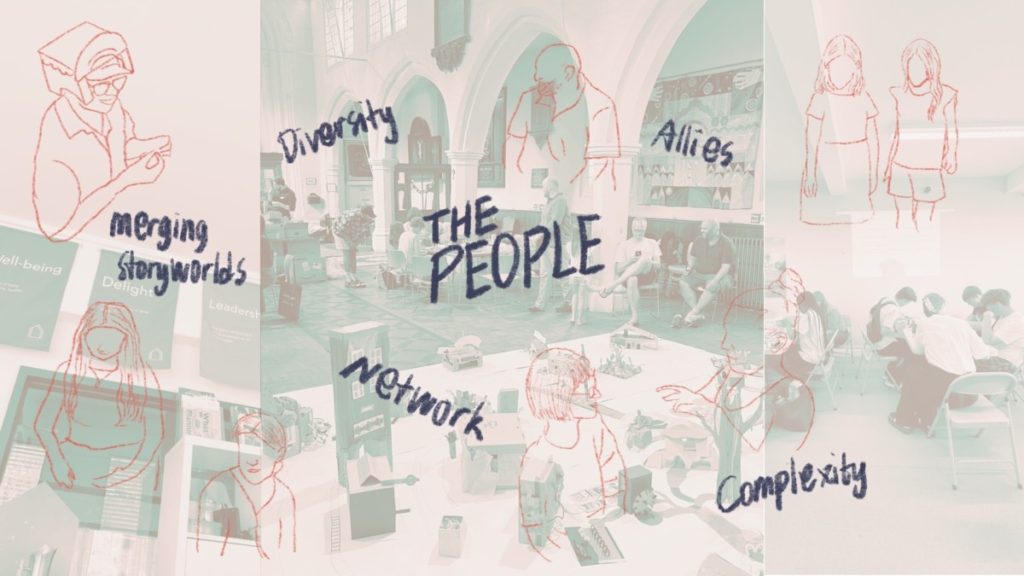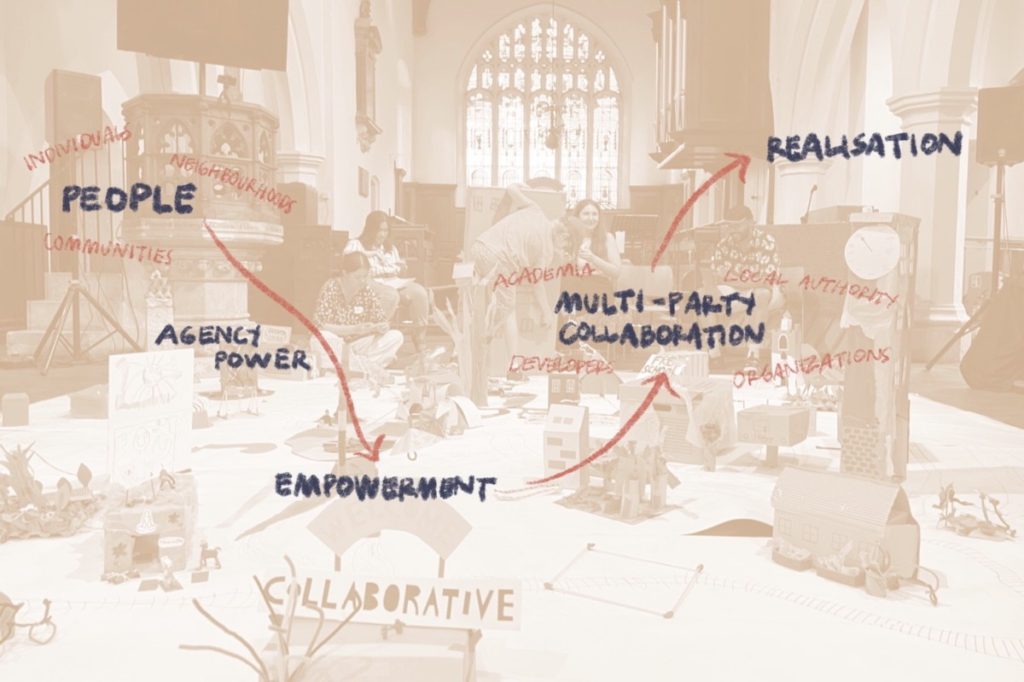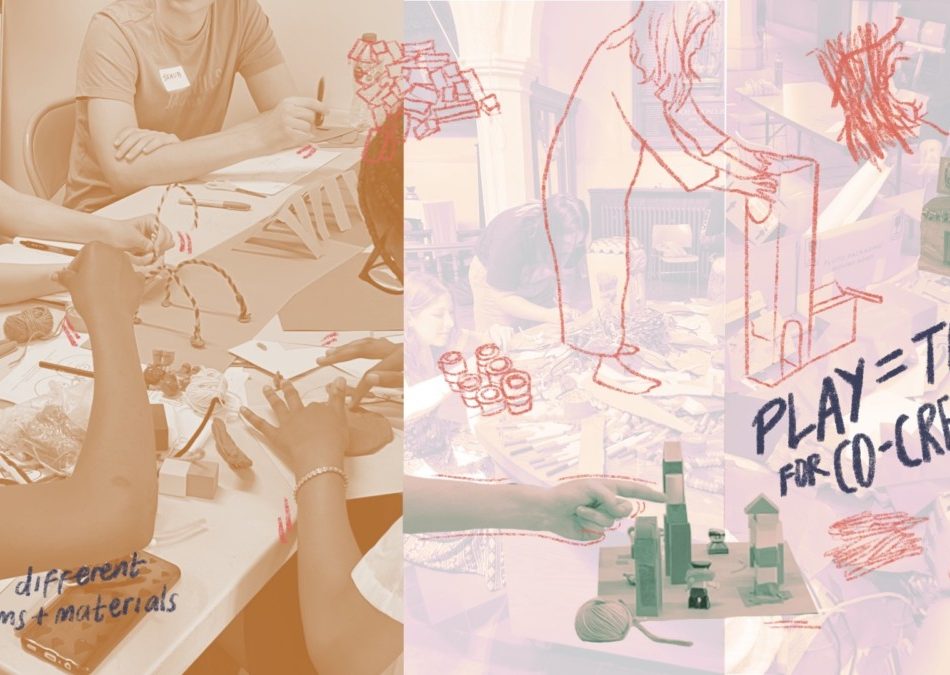Written by:
Hello, my name is Alsa. I’m a student from Indonesia, currently studying MA Narrative Environments at Central Saint Martins. For the past two months, I’ve been a part of The Glass-House as a summer intern.
I have always been interested in participatory practices and approaches to design. I have a background in interior architecture and graphic design, and I’ve found that most of the time a design practice works in a very top-down way. I wanted to investigate approaches that seek to give power to communities and future users. I aspire to implement methods of co-design and co-creation to the narrative environments that I’ll design.
I got in touch with The Glass-House because I wanted to engage and observe the implementation of these participatory methods. How communities have a meaningful part in built environment and placemaking projects. I also wanted to get first-hand experience in facilitating and/or participating in the co-design process. I thought it’s essential to gain understanding and involvement before I apply the methods in my own practice.

Throughout my time at The Glass-House, I’ve interacted with many people including professionals, local authorities, and communities. I’ve also picked up on how to execute a facilitation process, hold online events, mediate a discussion, and embrace diversity in the co-design process. Based on my experience and the projects I’ve been involved in, The Glass-House operates with inclusive and caring values, with a few methods to realise it.

Play as a Tool for Co-creation
Simple tools can be implemented to gather voices and ideas from people in the community, including children, young people, and adults. The obvious way may be through discussions and surveys. But play can be used to instigate creativity and reactions from people. It can also generate intergenerational communication and exchange. The process of co-creation can emerge organically through play. Using crafting mediums like coloured papers, markers, plasticine, cardboard, fuzzy sticks, and post-its can do wonders in a discussion. It encourages participants to actively touch and create things.

Network and Allies
The importance of building a network, making a database of key people, organisations, and companies that are in the same spectrum as The Glass-House is important. Because the big dream envisioned by the charity is not possible without multi-sector cooperation and collaboration. For example, collaboration between communities, the council or local authorities, and the people that are developing their built environment is needed for the ‘right’ places to emerge. The criteria for a ‘right’ place must come from the future users which is the community, in-line with regulations, and profitable for the companies. This intersection would be hard to realise if there is no communication and collaboration between parties.
I’ve learned that getting the idea of co-design or participatory design out into the world needs a lot of work. Councils or companies usually take the easy route and don’t take what the communities want. Activations such as webinars, workshops, and discussions are crucial to get the word out. The possibility of more parties adopting this method will increase with this effort. Even just getting them into the same room would spark something.
Meaning and Complexity
Everyone had different backgrounds. In narratological terms, this would be their storyworld. Where they are from, which relates to their cultural background, personal experiences, etc. are all factors that contribute to their storyworld. Taking this into account, each person will have different needs, will translate things differently, and will have varied experiences and responses. This complexity and diversity will feed into the co-design process.
A lot of the time during discussions, we tend to process information in our minds with what to respond with, or what to counter with. Actively listening is key to feeling empathy, where we can relate wholly to somebody. This experience is integral to participatory design, where everyone’s ideas matter. Creating something that resonates with every participant has to be done together, where collaboration is central. Collective values that are meaningful to the group will from the process.

Agency to Reach Empowerment
One of the most important things I’ve learned during my summer with The Glass-House is how agency, or giving someone the power to change things, can be very meaningful. Even the thought of having that particular power to react, contribute, change, or evolve their environment is a powerful tool to have. But of course real change doesn’t stop with just a thought or an idea, it needs to be realised with help from allies.
When collaboration between authorities and communities happens, remarkable things happen. Some of the proof can already be seen in the UK, which I found out from the Young People Making Places Webinar and Glass-House Chats: Resilient Places Roundtable. Examples like The Portland Inn Project and Connswater Community Greenway in Belfast are proof that realisation is possible
Overall Reflections
I will now embark on my second year in MA Narrative Environments, in which I will apply the things I’ve experienced and learned throughout my summer with The Glass-House. Putting inclusivity and care at the centre of my practice, building the network, learning to listen, embracing complexities, and empowering people will be some principles I will strive to implement during the process of designing my Narrative Environments major project.
More importantly, I’ve experienced such a nurturing and encouraging environment being part of The Glass-House. The warmth emanating from each person in The Glass-House Community is a vital ingredient in making participatory processes possible. Thank you so much to everyone in the Glass-House team! Elly for being my contact point and mentor during the whole placement, Louise, Jake, and Sophia. You all have been amazing and I learned so much from each one of you!

